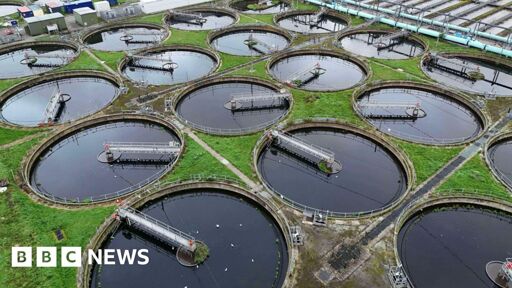Sure whatever. Heat exchanger is heat exchanger.
…until that one breaks.
Then it’s a shit storm.
I assume it’s relatively clean, but not safe to drink
Edit: I don’t think the replies are really getting it. This sounds like a great use of minimally processed water with relatively small risk. It’s much better to use this water than potable water for the same purpose, assuming water is going to be used no matter what.
Depends on the amount of treatment steps it undergoes.
Standard procedure is aimed at just removing solid debris and organic matter, to return clarified and chemically balanced water to nature, with no excess nutrients that could feed algae in water streams.
From that point forward, it is just a question of how far the treatment can be taken.
For reuse for cleaning, washing, etc? Maybe it just gets a minute dosage of sodium hypocloride.
Highly sensible areas, like beaches or lakes? UV treatment, maybe followed by micro filtering. Extreme scenarios? Reverse osmosis.
If the protocols in place are strong, it’s safe.
I always assumed the same… Turns out, a wastewater plant and treatment plant for drinking water look a lot more alike than I thought.
I’m pretty sure you could drink it, you’d just want to do it far enough away that you don’t have to think about where it came from.
I used to put fences around shit sites…they do a number on your stomach for a while til you get used to it.
Which means a leak would be “relatively clean” water getting all over the place.
Just doesn’t sound like a good idea.
Also, are we talking using this water in chiller cooling towers, like most buildings use? So essentially heating that “relatively clean” liquid to about 100° or so (you know, a temp that microbes just love), and releasing it to the atmosphere.
As someone that works in waste water: do it.
The company I work
edfor made a show of signing a partnership with a beer maker to supply them with water to create a unique batch.The water had to be mixed with regular water in order to balance out the profile, as the treated water had underwent an aditional step to make it safe for consumption (UV treatment and micro filtering); it was closer to filtered water than anything else.
Odourless, colourless and tasteless.
Who tried it, said the beer came out just fine.
Using treated waste water for cooling datacenters would be trivial. And cheap.
As someone that works in a data center, we use an absolute shit ton of reclaimed water for evaporative cooling. 😀
Nice! Good to know.
But why have an evaporative cooling system and not use a system similar to internal combustion engines, with a closed circuit system? It would be more economic.
But I wouldn’t want to have to replace the gasket if it broke!
Turns out it isn’t more economic, as you have to substitute the energy that’s carried away by the evaporating water with a commensurate amount of radiators and the extra electric power needed to pump through that cooling loop:
I know a few id like to cool with untreated sewage
Google’s Atlanta Data Center has been doing this for 18 years…
It’s not new nor the only one doing it, but it’s disappointing that people consider it new.
Enjoy your superheated poo water! Surely that will cause no problems, lol!





